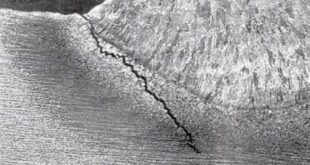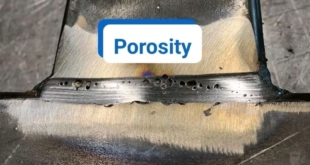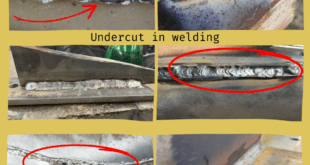Art of Welding Defect Repair: A Comprehensive Guide
Introduction
Welding is both an art and a science, where skilled craftsmen fuse metal components to create structures of strength and integrity. However, in the intricate dance of heat and metal, imperfections can arise, jeopardizing the integrity of the weld. Understanding how to identify and repair these defects is essential for welders striving for excellence. In this comprehensive guide, we will explore in detail the various types of welding defects, their causes, and the precise techniques to rectify them, ensuring that your welds meet the highest standards of quality and durability.
Understanding Welding Defects
Welding defects come in various forms, each with its own set of causes and consequences. From lack of fusion and incomplete penetration to porosity and undercutting, these imperfections can compromise the structural integrity of the weld if left unaddressed. Lack of fusion occurs when the molten metal fails to fuse with the base metal or previously deposited weld metal, resulting in a weak bond. Incomplete penetration occurs when the weld metal does not penetrate the full thickness of the base metal, leaving a void that weakens the joint. Porosity refers to the presence of gas pockets within the weld metal, which can reduce strength and promote corrosion. Undercutting occurs when the edges of the weld bead are eroded away, creating a groove that can lead to stress concentration and premature failure.

Steps to Repair Welding Defects
1- Identifying the Root Causes
To effectively address welding defects, it is essential to understand their root causes. Inadequate welding parameters, such as improper voltage, amperage, or travel speed, can lead to defects such as lack of fusion and incomplete penetration. Contamination of the weld area by dirt, oil, or moisture can result in porosity and other defects. Poor joint preparation, including improper fit-up or inadequate cleaning, can also contribute to defect formation. Additionally, improper welding technique, such as incorrect electrode angle or travel direction, can result in defects such as undercutting.
2- Consultation and Preparation
Before embarking on the repair process, it is essential to consult relevant welding standards and guidelines to ensure compliance with industry best practices. Additionally, seeking guidance from experienced professionals or welding engineers can provide valuable insight into the most effective repair techniques for specific defects. Proper preparation is also critical for successful defect repair. Ensure that the workpiece is clean, free from contaminants, and properly positioned for access to the defect site. Gather all necessary tools and equipment, including welding machines, grinding tools, and safety gear, to facilitate seamless repair work.
3- Selecting Repair Techniques
Once the defects have been identified and the root causes understood, it is time to select the appropriate repair techniques. The choice of repair method will depend on factors such as the type of defect, the material being welded, and the welding process used. For surface defects such as excess weld metal or undercut, grinding followed by weld build-up may be necessary to restore the weld profile to specification. In cases of severe corrosion or material degradation, weld overlay techniques may be employed to deposit a layer of compatible filler material to restore integrity and protect against future damage. For defects such as lack of fusion or incomplete penetration, re-welding the affected area using proper welding parameters and techniques is essential to ensure complete fusion and structural integrity.
4- Implementing Repair Procedures
With the repair techniques selected, it is time to implement the repair procedures with precision and attention to detail. Follow recommended welding parameters, including voltage, amperage, and travel speed, to ensure consistent weld quality and adherence to specifications. During the repair process, periodically inspect the weld for signs of proper fusion, penetration, and defect elimination. Make necessary adjustments to welding parameters or technique as needed to achieve optimal results.
5- Post-Repair Inspection and Quality Assurance
After completing the repair work, conduct a thorough inspection of the weld to verify defect removal and assess overall quality. Use non-destructive testing methods such as ultrasonic testing or radiographic inspection to confirm weld integrity and detect any residual defects. Additionally, document the repair process, including repair techniques, welding parameters, and inspection results, for quality assurance and future reference. This documentation provides a valuable record of the repair process and ensures compliance with industry standards and regulations.
FAQs
What is the repair method of welding?
The repair method of welding involves techniques such as grinding, weld build-up, re-welding, and weld overlay to rectify defects and restore weld integrity.
How do you solve welding defects?
Welding defects are solved by identifying their root causes, selecting appropriate repair techniques, and implementing precise repair procedures to eliminate defects and uphold weld quality.
Why is that it is important to identify and repair weld defects?
It’s important to identify and repair weld defects to maintain structural integrity, ensure product reliability, and comply with industry standards, ultimately preventing costly failures and ensuring safety.
What are the corrective actions for welding defects?
Corrective actions for welding defects include adjusting welding parameters, improving joint preparation, employing proper welding technique, and conducting post-repair inspection to verify defect removal.
What are the 7 common welding defects?
The 7 common welding defects are lack of fusion, incomplete penetration, porosity, undercutting, spatter, distortion, and cracks.
What is a welding defect?
A welding defect refers to any imperfection or irregularity in a weld joint that compromises its integrity, strength, or appearance.
What is repairing technique?
Repairing technique in welding involves methods such as grinding, weld build-up, weld overlay, and re-welding to rectify defects and restore weld quality.
What is repair rate in welding?
Repair rate in welding refers to the frequency or percentage of defects identified during welding operations that require repair to meet quality standards.
Conclusion
Mastering the art of welding defect repair requires a combination of skill, knowledge, and meticulous attention to detail. By understanding the nature of welding defects, selecting appropriate repair techniques, and executing repair procedures with precision, welders can effectively address defects and uphold weld integrity to the highest standards. Remember, continuous learning and experience are key to refining your defect repair skills and achieving excellence in welding. Embrace each welding challenge as an opportunity to grow and hone your craft, and never hesitate to seek guidance from experienced professionals or welding experts along the way. With dedication and perseverance, you can become a master of welding defect repair, ensuring the production of high-quality, reliable welds that stand the test of time.
 Welding of Welders All about Welding and Welders
Welding of Welders All about Welding and Welders



